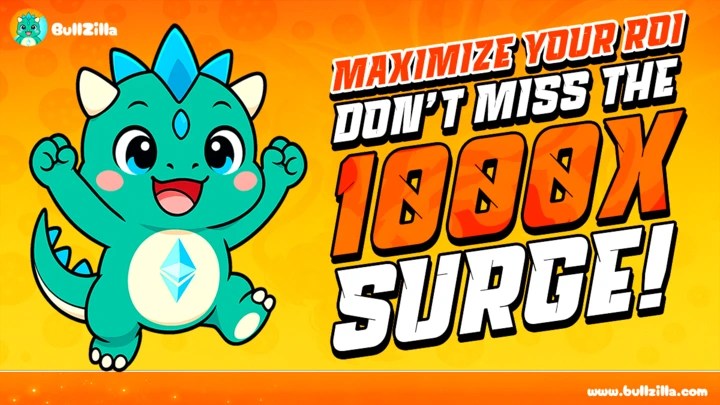Is Pepeto The Best Crypto Investment Over Dogecoin And Pepe Coin? All Signs Point To : YES

Dogecoin and pepe coin reshaped the mood of crypto. Late-night charts turned into stories people still trade, big wins, painful misses, and the “what if” that lingers. Two names no one forgets because they made everyday traders believe the upside was real.
Can those days return, or is 2025 a new game? Many investors are moving toward crypto presales, arguing tiny entry prices can flip into outsized gains, if there’s a real project behind them. That points straight to Pepeto (PEPETO), the presale most people mention first. The team looks determined, building something useful, and the traction is hard to ignore: more than $6.7 million already raised. It makes you wonder, do early buyers see what others don’t? So here’s the question that matters: does Pepeto earn the “best crypto investment” tag, or do dogecoin and pepe coin remain the smarter bets for 2025?
The Two Legends: Pepe Coin & Dogecoin
We all remember the early run: dogecoin turning internet fun into gains, pepe coin ripping through charts overnight. Two moments that made regular traders feel crypto could change lives fast, and plenty still regret missing them.
Today the picture has changed. Dogecoin trades like a blue-chip meme, steady, slower, famous, waiting on a real engine: clear utility, a public roadmap, something that moves the needle. Without that, it preserves value more than it multiplies it.
Pepe coin had a wild first sprint, then the heat faded. No fresh tools, no active build to keep momentum, and capital rotated to newer plays with utility.
That’s why attention is sliding to Pepeto, one of the few presales that actually feels like it can become something great in a market full of empty promises. It’s the token people have been waiting for: fresh hope, real intent. You can sense a plan under the surface and a team treating this rally like a mission, not a moment. They move with purpose; the project carries that early energy you only notice when something has legs. No spoilers yet, details come next, but the outline is already drawing serious eyes and pushing Pepeto into the best crypto investment conversation.
Pepeto (PEPETO): Built For Life-Changing Gains
Pepeto takes what made dogecoin and pepe coin unforgettable, community energy and raw speed, and adds the parts they never fully had. It runs on Ethereum mainnet, next to deep liquidity and active builders. And it brings real tools: PepetoSwap, a living hub designed to gather legit, leading memecoins in one place (more than 850 token already applied to list), plus a cross-chain bridge with smart routing that unifies liquidity, cuts extra hops, reduces slippage, and turns usage into steady token demand.
Because every transactions uses the swap, through the PEPETO token, on-chain activity can turn into steady demand, making sustained upward pressure far more likely over time. In simple words: High demand on the token ® Price of $PEPETO keep increasing ® Investors guarantee sustainable returns on their investments.

Picture a memecoin engine on rails. Culture lights the spark; the stack keeps it moving. The presale has already reached millions, up to $6,7M already raised, while the entry price stays interesting at $0,000000153. That’s why early eyes are glued to it: they can see how Pepeto has room to grow, near-term, with tokenomics that limit supply and top-tier listings nearly secured by the team as hinted in a recent post on socials ( PEPETO post on X).And long-term, with a token that powers the swap. If listings, on-chain volume, and daily use rise together, this setup points to big upside, the one traders have been waiting for for years.
Right now, no other memecoin offers this mix: speed, utility, and a shared home for the wider scene. That makes Pepeto the kind of project built for life-changing returns, the one people brag about catching early, or the one many regret missing for a lifetime.
Final Answer To: Is Pepeto The Best Crypto Investment Over Dogecoin And Pepe Coin?
Where dogecoin and pepe coin wrote the early chapters, and soared on pure hype at launch, Pepeto is shaped as a mission-driven project, aiming for the full kit: a hard-capped model, products people actually can use, and code reviewed by independent experts (Solidproof and Coinsult), a level of security many crypto presales don’t have. The team treats it like legacy work, shipping fast, refining the small things, showing up in front of the community, and pushing forward week after week.
The presale clearly moves early buyers to the front, with staking in place (currently at 228% APY), and prices stepping up each stage. Early traction suggests that line is getting long. That’s the edge here: utility plus purpose, culture plus tools, set to run farther than hype ever could.
If there’s a name ready to outshine pepe coin and dogecoin in 2025, as the best crypto investment to make, this is the one people will be grateful they spotted before everyone else. No smart investor would let it pass. Buy Pepeto now at the current price of $0,000000153, the lowest Pepeto price you will ever see again. If you’re building a shortlist for the best crypto to buy now, Pepeto should lead that list. Don’t miss this rare opportunity, and take action now at the official website.
Disclaimer
To buy PEPETO, use the official website: https://pepeto.io/ As listing day approaches, some will try to ride the hype with fake platforms. Stay cautious and verify the source.
To learn more about PEPETO, visit its Instagram, and Twitter.
You May Also Like

Wall Street Loves These 5 Cryptocurrencies: How Much Could $1,000 Grow if You Held for the Next 6 Months — $KPG Round 3 Presale at $0.029

August Crypto Market Review: ETH Leads the Rise, Institutional Funding and Macro Factors Dominate Market Trends
